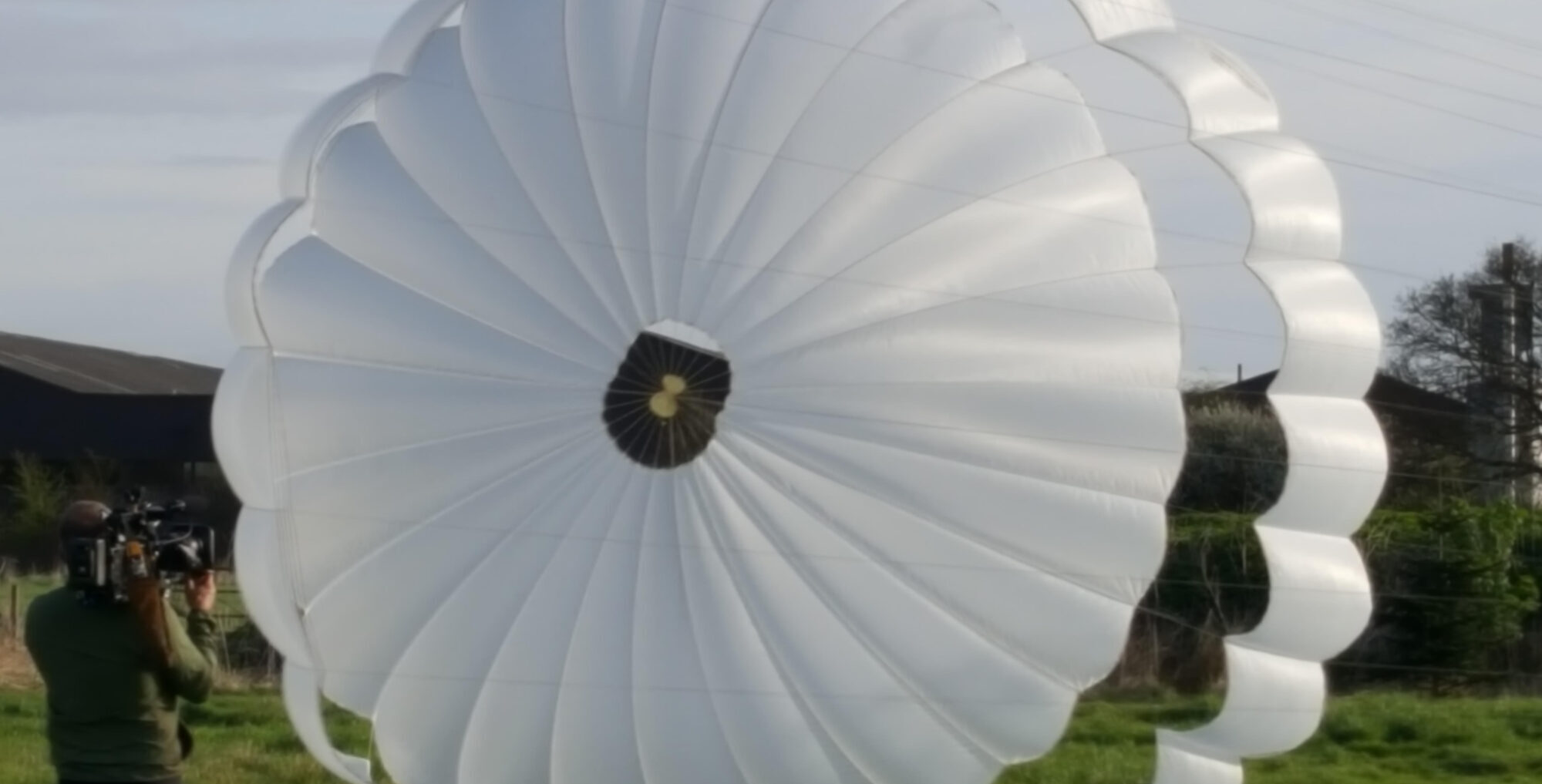The Hypercone Systems study forms a part of NASA’s Mars Technology program.
Lifting body entry vehicles have been shown to be capable of delivering large mass payloads to high altitudes on the Martian surface but require a significant improvement in parachute capability (reliable performance at Mach 3.0) in order to achieve this goal. Studies have, however, suggested that parachutes suffer severe inflation instability above Mach 2.2. One alternative approach is to use a Hypercone: an aerodynamic decelerator designed to provide deceleration and stabilization in the Martian atmosphere from Mach 4.0 to subsonic conditions. It comprises an inflated torus supporting a conical fabric forward section. The conical form has well-established drag and stability characteristics, leading to robust and mass-efficient deceleration performance at supersonic speeds, where parachutes typically perform poorly. The Hypercone is fully flexible and can be packed like a parachute. It is deployed directly attached to the lander.
NASA required a system study to assess the capability of the Hypercone to help deliver a 4.5 metric tonne payload to a landing site 2.5 km above the MOLA datum.
Vorticity’s broad entry, descent and landing system experience was used to support NASA and Vertigo in assessing the potential of the Hypercone.
Vorticity were responsible for system analysis, trade studies and design of the Hypercone and parachute including:
• Requirements analysis
• Trajectory analysis and system sizing for nominal performance
• Off nominal performance sensitivity analysis
• System sequence definition
• Simulation of Hypercone inflation dynamics
• CFD prediction of Hypercone aerodynamics
• Analysis of flight dynamic stability
• Structural analysis of the Hypercone
• Mass optimisation
• Development planning
The study verified the potential of the Hypercone for planetary deceleration. Outstanding features included high drag coefficient and aerodynamic and structural stability up to at least Mach 4.0. A road map for further development of the device was defined.


